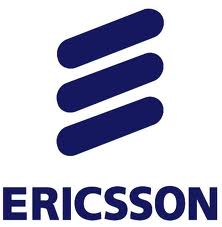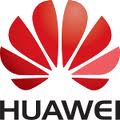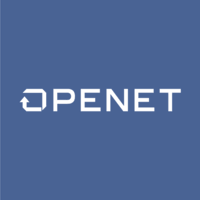 Ericsson held its annual Investor Day on November 06 in Stockholm. President and CEO Hans Vestberg elaborated on how Ericsson will leverage its current assets – technology leadership, services leadership, global scale – to move from being a leading mobile infrastructure vendor to become a leading Information and Communications Technology solutions provider in telecoms.
Ericsson held its annual Investor Day on November 06 in Stockholm. President and CEO Hans Vestberg elaborated on how Ericsson will leverage its current assets – technology leadership, services leadership, global scale – to move from being a leading mobile infrastructure vendor to become a leading Information and Communications Technology solutions provider in telecoms.
Key highlights of the event are:
- Management outlines list of ongoing activities to improve profitability
- The fundamentals for longer-term positive development for the industry remain solid. Ericsson continues to invest in its main competitive assets – technology leadership, services leadership and global scale in order to become a leading ICT solutions provider in telecoms
- Ericsson estimates the overall addressable equipment market will show a CAGR of 3-5{af589cdba9d77786c8c861317dbad60bba1e2ebbf56e2ffab874a1b59fde9ce3} 2012-2015. Telecom services expected to show a CAGR of 5-7{af589cdba9d77786c8c861317dbad60bba1e2ebbf56e2ffab874a1b59fde9ce3} and support solutions expected to show a CAGR of 9-11{af589cdba9d77786c8c861317dbad60bba1e2ebbf56e2ffab874a1b59fde9ce3}
“This development will naturally imply a future business mix for Ericsson with more recurring software and services revenues. However, hardware will always be part of the mix and a key differentiator for Ericsson,” says Hans Vestberg.
Ericsson is currently in a phase with a higher share of coverage than capacity projects due to a high proportion of hardware being rolled out. At the Investor Day Management reiterated that this mix is expected to prevail short-term but that the negative impact from the network modernization projects in Europe will start to gradually decline end 2012. Hans Vestberg pointed to the fact that the company presently has a selective approach to market share investments and a strong focus on commercial management. Management also discussed some uncertainties going forward such as macroeconomic factors, the competitive situation and operator consolidation.
A market outlook for 2012-2015 was presented. Ericsson estimates that the total network equipment market will show a compound annual growth rate (CAGR) of 3-5{af589cdba9d77786c8c861317dbad60bba1e2ebbf56e2ffab874a1b59fde9ce3}. In Ericsson’s key equipment market segments – radio, IP and transport, core – the CAGR is expected to be 4-6{af589cdba9d77786c8c861317dbad60bba1e2ebbf56e2ffab874a1b59fde9ce3}. In radio a CAGR of 2-4{af589cdba9d77786c8c861317dbad60bba1e2ebbf56e2ffab874a1b59fde9ce3} is expected, in IP and transport a CAGR of 6-8{af589cdba9d77786c8c861317dbad60bba1e2ebbf56e2ffab874a1b59fde9ce3} and in core a CAGR of 0-2{af589cdba9d77786c8c861317dbad60bba1e2ebbf56e2ffab874a1b59fde9ce3}. Ericsson expects the market for telecom services to show a CAGR of 5-7{af589cdba9d77786c8c861317dbad60bba1e2ebbf56e2ffab874a1b59fde9ce3} in the same time period. The market for support solutions is forecasted to show a CAGR of 9-11{af589cdba9d77786c8c861317dbad60bba1e2ebbf56e2ffab874a1b59fde9ce3}, including a CAGR of 12-14{af589cdba9d77786c8c861317dbad60bba1e2ebbf56e2ffab874a1b59fde9ce3} for the media market. The market for OSS/BSS software and services is expected to show a CAGR of 5-7{af589cdba9d77786c8c861317dbad60bba1e2ebbf56e2ffab874a1b59fde9ce3}.
Ericsson has a leading market position in four out of its six businesses. In mobile equipment, Ericsson increased its market share to 38{af589cdba9d77786c8c861317dbad60bba1e2ebbf56e2ffab874a1b59fde9ce3} in 2011. In the three key equipment market segments, radio, IP and transport, core, the company has an aggregated market position of 27{af589cdba9d77786c8c861317dbad60bba1e2ebbf56e2ffab874a1b59fde9ce3} which makes Ericsson the largest player. In the fragmented telecom services market Ericsson increased its market share 2011 from 11{af589cdba9d77786c8c861317dbad60bba1e2ebbf56e2ffab874a1b59fde9ce3} to 12{af589cdba9d77786c8c861317dbad60bba1e2ebbf56e2ffab874a1b59fde9ce3}. The company also has a leading market position in OSS/BSS.
During the Investor Day, Hans Vestberg elaborated on strategies to deliver profitable growth. Areas with portfolio momentum expected to contribute to top-line growth are mobile broadband, managed services and OSS/BSS. He also described how the company is expanding beyond its core business in order to capture value from adjacent industries, while operators continue to be the major customer segment.
Jan Frykhammar, CFO and Executive Vice President, elaborated on how Ericsson intends to improve capital efficiency. The working capital targets for the company will remain unchanged with DSO of less than 90 days, payable days of more than 60 days and Inventory turnover of less than 65 days.
Jan Frykhammar reiterated that the company will continue to proactively identify and execute on additional efficiency gains and cost reductions in order to improve profitability. He also outlined a list of profit improvement areas to reach the compound operating income growth of 5-15{af589cdba9d77786c8c861317dbad60bba1e2ebbf56e2ffab874a1b59fde9ce3} required in the Executive Performance Stock Plan.
Johan Wibergh, head of business unit Networks and Executive Vice President, pointed out key contributors for the segment to return to double digit operating margin. He mentioned a number of examples of these contributors including Ericsson’s ability to gain a price premium through its technology leadership, business mix improvements, scale and agile software development. Rima Qureshi, head of business unit CDMA Mobile Systems, elaborated on how all Ericsson’s CDMA customers have successfully evolved into Ericsson’s LTE solutions. Ericsson’s acquisition of Nortel has been successful and focus for the CDMA operation is now on maximizing business contribution as well as to excel in life cycle and cost management.
Magnus Mandersson, head of business unit Global Services and Executive Vice President, described the company’s services journey to drive the transformation to becoming a leading ICT solutions provider in telecom. Mandersson outlined the continued focus on industrialization of services, leveraging global scale and how the company drives services innovation for continued growth.
Per Borgklint, head of business unit Support Solutions, discussed how the segment Support Solutions showed a trend shift Q212 and Q312 when it reported profit. He described the strategy for Support Solutions with focus on OSS, BSS, Media and m-commerce. The presentation also focused on the characteristics of the business where a subscription based model for recurrent software revenues is being introduced.
Ulf Ewaldsson, Chief Technology Officer, discussed key technologies for evolving the networks, including heterogeneous networks, 4th generation IP, cloud and software defined networks as well as OSS/BSS and real-time analytics.
At the end of the day, Hans Vestberg concluded that the fundamentals for longer-term positive development for the industry remain solid. He stressed how increased smartphone penetration and consumers demand for having data connectivity around the clock is driving increased complexity in the networks. Until now, the major part of the investments in the telecom industry has been directed to devices and applications. Going forward, Ericsson expects the industry to re-balance investments towards optimizing network performance.
“Mobility is becoming even more relevant in the networked society, driving the demand for our offering,” Hans Vestberg concluded. “We have a clear long-term objective to increase our value share from the networked society through becoming a leading ICT solutions provider in telecom. In the short-term, we aim to improve value creation by focusing on profitable growth.”





